Did you know less than 5% of pool and billiard players consistently execute precision cue ball control in competitive play? The difference between weekend hustlers and world-class billiards players often comes down to secret techniques most amateurs never discover. Ready to enter the inner circle? This guide unveils the real advanced billiard techniques that will transform your game, revealing methods pros are reluctant to share.
- What separates casual pool play from true mastery
- How to control the cue ball with surgical precision
- Pro secrets behind jump shots and bank shots
- Advanced aiming and visualization tricks
- Optimal equipment choices for superior performance
- Practice routines and routines that deliver elite results
Unlocking Advanced Billiard Techniques: The Secrets Behind Professional Pool and Billiard Mastery
For most players, winning a pool game is about pocketing balls—but for advanced competitors, every shot is a calculated strategy. Advanced billiard techniques go far beyond basic potting. These pro-level methods involve a blend of technical accuracy, mental sharpness, and strategic positioning. Rather than simply sinking the object ball , top players obsess over cue ball control, table patterns, and setting up future shots. Techniques like side spin , draw shot , and follow shot give veterans the edge in clutch moments, especially on tournament pool tables and billiards tables .
Unlocking advanced billiard techniques demands a shift in mindset. Instead of reacting to each shot, professional pool players anticipate three or four moves ahead. They evaluate the layout, assess cluster breaks, and exploit cushions to position the cue ball perfectly. Understanding the unique physics of the cue tip , back foot stance, and the nuances of hitting the cue ball at precise contact points opens the door to high-percentage strategies rarely seen in recreational play. This next level of expertise will significantly improve your consistency, control, and ability to win under pressure.
What sets advanced billiard techniques apart from basic pool play?
What drastically separates seasoned billiards players from casual enthusiasts is their intense focus on cue ball management and shot planning. Professionals pay close attention to the geometry behind every move—the angle of impact, spin, and speed all contribute to outcomes on the pool table . They recognize when to apply top spin for smooth follow-through, when to deploy subtle side spin for safety plays, or how to execute a flawless draw shot to retreat the cue ball. Each technique has a precise application based on the table's pattern and their goal for the next shot. This methodical approach ensures that every strike positions the ball for optimal control during the next turn.
In contrast, most recreational players focus solely on pocketing the object ball without considering the aftermath. Advanced players consider cue tip condition, grip, stance, and use the butt of the cue to fine-tune shot accuracy. They have heightened awareness of the speed, the tangent line, and how contact points change when striking the cue ball with various spins. This allows them to recover from tough positions, create advantage even in defensive scenarios, and execute shots that amateurs often deem impossible.
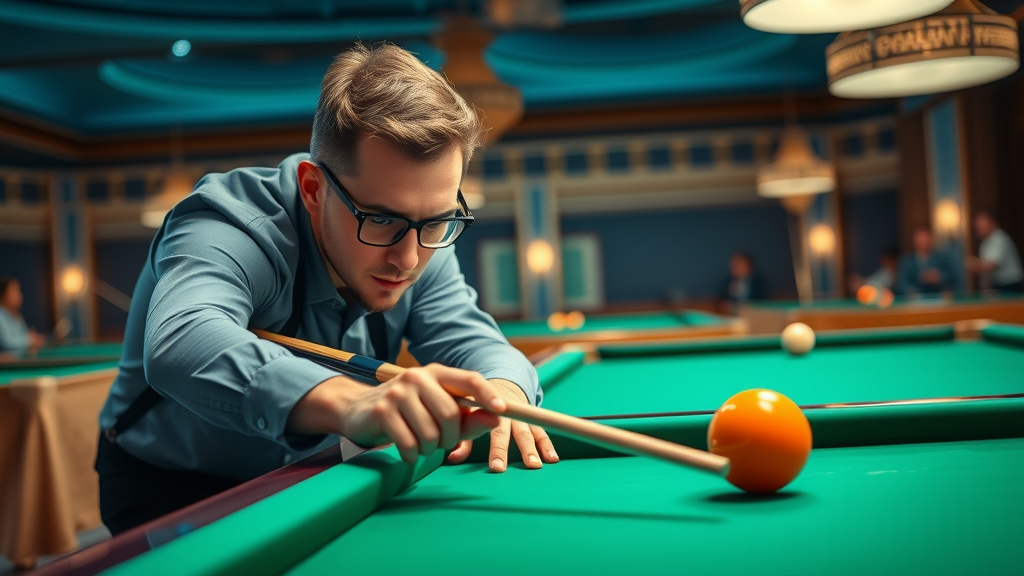
Advanced billiard techniques and the psychology of competitive play
Beyond technical skills, the true hallmark of champions is their psychological resilience. Advanced billiard techniques don’t just demand mechanical precision—they require stoic nerves and mental agility. Professional pool players manage the inevitable pressure of competition by relying on pre-shot routines, deep focus, and tactics for staying present at the table. This mental discipline allows them to recover quickly from mistakes, block out distractions, and maintain consistency even under bright lights and intense scrutiny.
Elite billiards players trust their intuition honed over thousands of hours. They approach high-stakes moments with controlled breathing and deliberate practice rituals, reinforcing confidence in their cue stick handling and shot selection. The psychological aspect separates good players from legends: managing adrenaline, staying calm after missed shots, and making the correct decisions when games are on the line.
- Consistency : Repeating flawless mechanics under pressure
- Control : Dictating every movement of the cue ball
- Patience : Waiting for the right opportunity rather than forcing low-probability shots
"You don’t have to be better than everyone else. You just have to be better than you ever thought you could be." – Unknown billiards champion
Decoding the Cue Ball: Precision Control in Advanced Billiard Techniques
Understanding and manipulating the cue ball is the crux of all advanced billiard techniques . Professionals don’t just strike the cue ball—they command it to travel, spin, or stop precisely as the situation demands. Mastery begins with the ability to "read" not only the path of the target ball but the subsequent trajectory of the cue ball. This predictive insight transforms average pool and billiard players into champions who can clear complex table patterns and set up winning combinations.
Much of this discipline revolves around how the cue tip interacts with the ball. Whether imparting side spin for positional play, using top spin for a follow shot, or deploying a crisp draw to reverse cue ball movement, elite players refine their control the cue ball skills by adjusting contact points and shot velocity. Mental visualization combines with physical execution to ensure that striking the cue ball has the intended effect on both the shot and setup for subsequent plays.
Reading spin, speed, and the art of cue ball positioning
What distinguishes remarkable advanced billiard techniques is the ability to predict how spin and speed influence the cue ball's journey. Professionals use side spin (English), top spin (follow), and draw (backspin) to alter the path after hitting the object ball. The degree of spin is adjusted by where the player strikes the cue ball with the cue tip—a subtle change resulting in radically different outcomes. For instance, a well-executed draw shot can return the cue ball after contact with the object ball, while follow will send it forward. Combining these nuances is key to owning the table and dictating every shot.
Speed control is equally important. Too much force and precision is sacrificed; too little, and control of the cue ball is lost, often blocking future shots. Professional pool players focus on the synergy between spin and speed—gauging not only the angle of the shot but also how friction, cushion bounce, and table cloth affect the result. This enables them to navigate tricky table layouts, avoid scratches, and consistently place the cue ball in ideal positions, outpacing opponents of lesser skill.
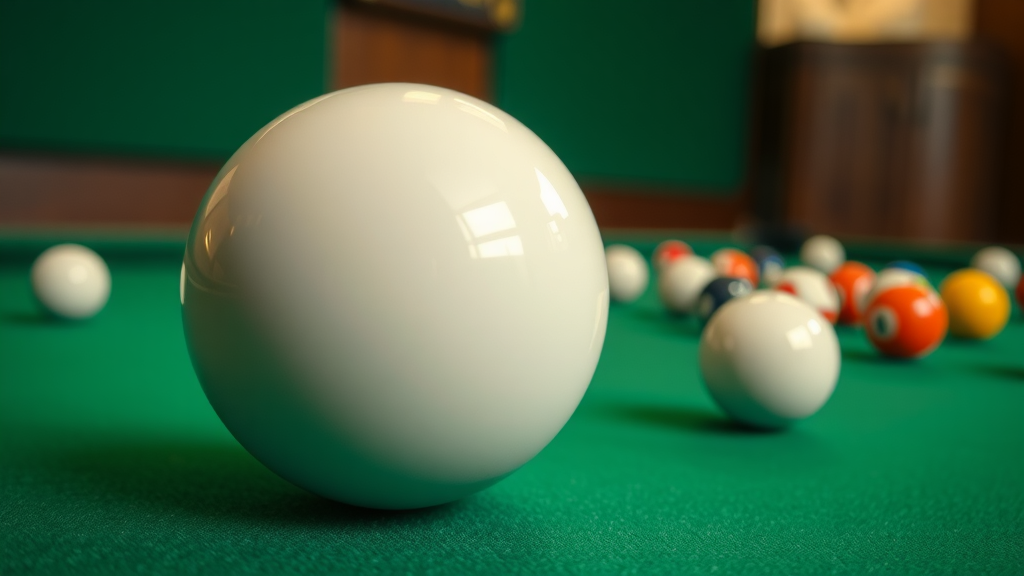
Applying the 30 degree rule to elevate your cue ball mastery
One of the foundational concepts pros use to control the cue ball is the 30 degree rule. This advanced billiard technique predicts the path the cue ball will follow after it contacts an object ball, providing consistent results in both offensive and defensive play. When the cue ball strikes the object ball with no significant spin and at a nearly full hit, it will depart at a 30-degree angle relative to the line of centers. This is not an abstract theory—it's the secret weapon behind tactical position play, enabling an elite player to plan several shots in advance, including complex bank shots or multi-cushion safeties.
Understanding and practicing the 30 degree rule eliminates much of the guesswork from shot-making. Instead of relying on intuition alone, players can visualize the cue ball’s path, minimize unexpected outcomes, and position themselves for the next target ball with surgical accuracy. Combine this knowledge with visualization drills, and you’re equipped to navigate high-pressure moments and clear challenging arrangements with confidence.
Table: Cue Ball Behaviors and Common Errors To Avoid
| Cue Ball Behavior | Description | Common Error | Pro Correction |
|---|---|---|---|
| Top Spin | Follows object ball after contact | Overhitting or misaligning cue tip | Strike slightly above center with smooth follow-through |
| Draw (Backspin) | Cue ball retreats after contact | Insufficient spin or too little force | Strike below center with rapid follow-through |
| Side Spin | Alters cue ball trajectory post-cushion | Applying side spin without adjusting aim | Practice compensating for side effects in aiming line |
| No Spin (Stop Shot) | Cue ball stops dead at contact | Unintentional spin due to grip or stance error | Strike precisely at center with even follow-through |
The Jump Shot and Bank Shot: Cornerstones of Advanced Billiard Techniques in Pool and Billiard
Two shots separate casual pool and billiard fans from tournament contenders: the jump shot and the bank shot . Mastering these moves is an indispensable part of the advanced billiard techniques arsenal. The jump shot lets you leap the cue ball over blockers, while the bank shot uses rails to send the object ball into the pocket from seemingly impossible positions. Reliable execution under match conditions transforms a pool player’s reputation from average to awe-inspiring and brings complex sequences, like breaking clustered balls, within easy reach.
Effective use of the jump and bank shot is more than just flashy showmanship. These skills turn defensive situations into offensive threats, allowing you to escape tight spots or even run the table with creative shot-making. Practicing them in a structured routine, focusing on setup, cue elevation, and follow-through, lets you deploy them precisely when the moment counts most.
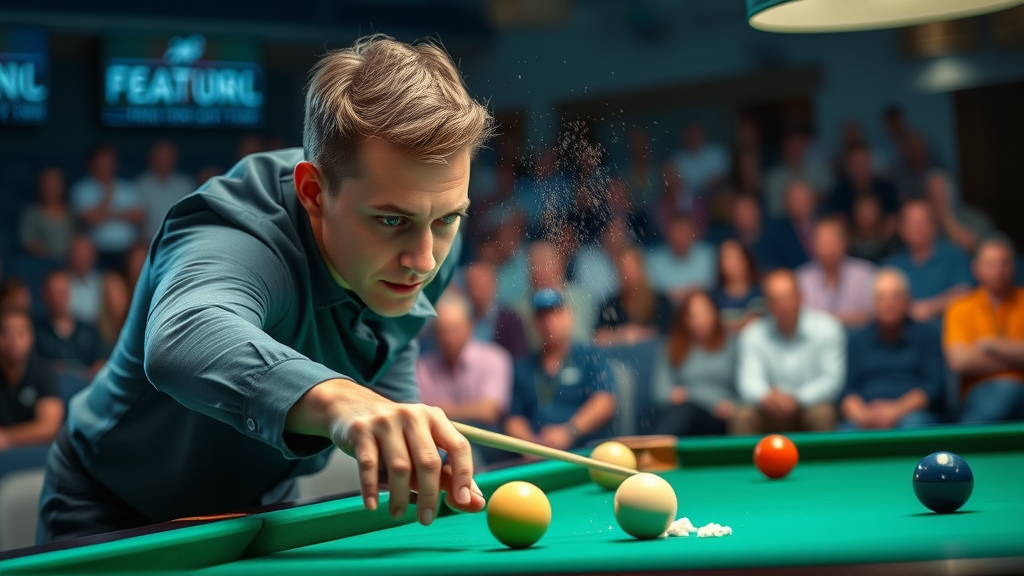
How to execute a flawless jump shot under pressure
Striking the cue ball to perform a jump shot demands specific technique and nerves of steel. Begin with a firm, balanced stance—your back foot slightly behind to anchor stability—and hold the cue stick more vertically than on standard shots. Use a controlled acceleration, contacting the cue ball above center with a sharp but short stroke. This imparts upward force, causing the ball to lift over obstructions cleanly without violating tournament rules. Never sacrifice precision for power; accuracy is more important than height in professional play.
Under pressure, focus on your pre-shot routine to calm nerves and promote consistency. Visualize the cue ball’s arc, breathe deliberately, and execute the shot as practiced. Developing a reliable jump shot technique opens up scoring options and recovery plays when no direct path exists, making it one of the signature tools of advanced billiard techniques.
Mastering the geometry behind the perfect bank shot
The bank shot is inherently geometric—requiring an understanding of angles, table width, and spin effects. When targeting a bank, envision the aiming line as a mirror extending from the target ball to the chosen cushion. Adjust for cue ball spin and speed, which can alter the rebound angle. Professionals master this by routinely visualizing possible trajectories, practicing cut angles, and experimenting with English to influence the cue ball’s path after banking.
Top pool players pay close attention to the condition of the pool table —clean, predictable rails yield more accurate banks, while worn cushions can turn precision banks into errors. Practicing banks using different spins and observing how the cue ball reacts helps in developing instinctive control and turning these high-difficulty shots into potential match-winners.
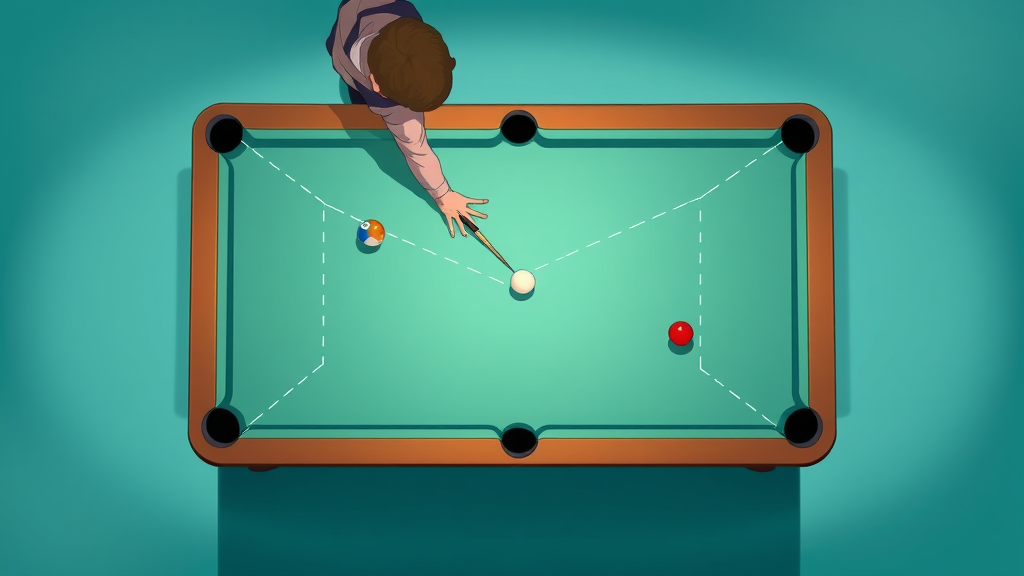
- Technique Checklist:
- Setup stance and cue alignment
- Aim at the correct spot on the cushion
- Elevate cue (for jump shots) or apply accurate spin (for banks)
- Maintain steady follow-through
Perfecting the Aim: Advanced Billiard Techniques with the Aiming Line and Beyond
Pinpoint accuracy in pool and billiard is not accidental; it’s the result of refined aiming systems and consistent practice. Advanced billiard techniques often revolve around understanding the various aiming line methods and how each one leverages physics and muscle memory for maximum results. The best players debate over systems like the ghost ball, contact point, and parallel aiming line, but all agree on the necessity of practice and attention to subtle details in perspective, stand, and eye-level alignment.
Regardless of the chosen system, the aim is to ensure that the cue ball strikes the object ball at a precise contact point. Practicing these systems under real-game conditions discourages reliance on "feel" alone, allowing professionals to execute demanding shots confidently, no matter the pressure or complexity of the table.
What is the best aiming technique in pool?

Debate among professionals centers on three prominent systems: the ghost ball , contact point , and parallel aiming line . Each has advantages—ghost ball visualization helps with natural cut angles, while contact point systems offer laser-like accuracy for straight shots. The parallel aiming line method provides a linear reference for harder shots. The ideal technique is the one that fits your natural sight line and shot style—but all require dedication and repetition. Mastering at least one advanced aiming method is critical if you want to move past the basics and outplay seasoned opponents.
Answer: Experts debate between the contact point system, ghost ball, and parallel aiming line—all of which require precision and practice to master advanced billiard techniques.
Seasoned pool players testify that each aiming strategy comes with a learning curve but leads to better consistency when mastered. For example, the "ghost ball" method mentally places a phantom cue ball behind the object ball, allowing players to align the shot as if the cue ball occupies that position. The contact point method focuses directly on where the cue ball and target ball collide, creating a mental image to guide stroke direction. The parallel aiming line technique offers a more geometric approach, useful for tricky angles and multi-cushion banks. Integrating exercises for each into daily drills allows for versatility and adaptability in competitive play.
Visualization tricks pros use for near-automatic accuracy
Visualization is the not-so-hidden weapon of billiard champions. Before stepping into the shot, top players mentally run the sequence—from cue setup to ball movement and final positioning. Techniques include mapping the aiming line , rehearsing the follow-through, and visualizing potential outcomes for each route. This mental preparation ensures every movement is intentional, subconscious habits are reinforced, and decision-making under pressure is automated.
By closing their eyes or rehearsing the motion without striking the cue ball, players can program their brains for accuracy. Pros even simulate missed shots and intentionally practice recovery scenarios, which improves confidence and adaptability during high-stakes situations—a hallmark of advanced billiard techniques.
Finding Your Edge with the Right Equipment: The Pool Table, Billiards Table, and Cue Stick
No matter how advanced your technique, the quality of your cue stick , pool table , or billiards table can shape your performance. Strong players seek cues with the right balance, weight, shaft flexibility, and tip shape. Likewise, table quality—from cushion bounce to cloth speed—affects the response of every shot, especially when attempting spin-intensive plays or advanced bank shots . Investing in elite gear, or at minimum, maintaining your current equipment in pristine condition, is a subtle but vital aspect of the professional’s approach.
Knowing the difference between pool tables and billiards tables lets you adjust your style for optimal results. Larger billiards tables (common in three-cushion games) require stronger stroke play and more predictive cue ball paths, while American pool tables reward softer touch and acute aiming. Advanced players choose their cue stick based on tip diameter, shaft design, and grip comfort, understanding that these factors deeply impact their ability to execute nuanced shots like draw, jump, and side spin with the confidence required in elite competition.
Selecting the optimal cue stick for advanced cue ball control
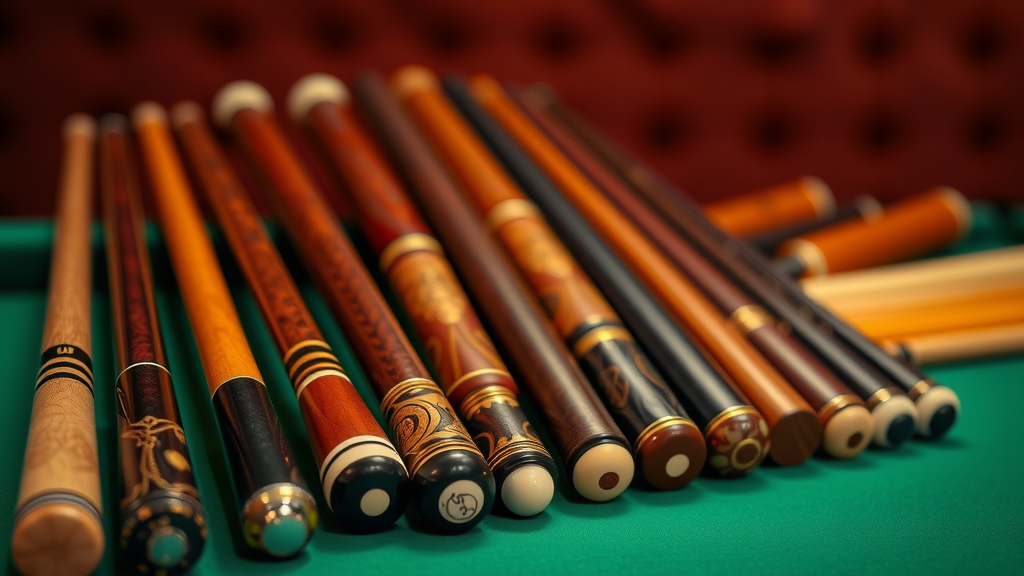
The cue stick is your precise instrument—choosing the right one makes a world of difference. Professionals look for cues with a solid yet responsive shaft, high-quality cue tips (often layered leather for precise grip), and balanced weight for smooth stroke delivery. For maximum control, many opt for low-deflection shafts which minimize squirt and allow for predictable side spin or English shots. Don’t overlook the butt of the cue , as ergonomic grips can reduce fatigue during extended matches.
Adjust the cue weight and tip hardness to match your playing style. Lighter cues favor finesse and advanced spin work, while heavier cues add power for break shots and draw. Regular cue maintenance—including chalking, tip shaping, and rewrapping—guarantees your tool performs at its peak. Upgrading your cue as your technique evolves is an investment that pays off in every billiards game .
How differences between pool table and billiards table affect advanced billiard techniques
Pool tables and billiards tables are not interchangeable, and understanding the differences is fundamental for advanced play. A standard pool table is smaller (generally 7-9 feet) with six pockets, allowing for a variety of shot styles and easier pocketing. In contrast, traditional billiards tables are larger (up to 10 feet), feature no pockets, and demand greater shot precision and cue ball control due to the need for multi-cushion play. Advanced players adapt their technique for each—using more deliberate spin and force on the larger, pocketless billiards table, while focusing on finesse and pattern play on the pool table.
The cloth speed and cushion responsiveness also influence shot planning. Fast tables require softer touch and more predictive control, while slow tables often necessitate increased power and spin compensation. Practicing on both surfaces builds an adaptable skill set—the mark of a truly advanced billiards player.
Comparison of Pool Table vs. Billiards Table Features Relevant to Advanced Play
| Feature | Pool Table | Billiards Table |
|---|---|---|
| Size | 7-9 feet (with pockets) | 10 feet (no pockets) |
| Typical Game | Eight-ball, nine-ball | Carom, three-cushion billiards |
| Ball Size | Smaller, lighter balls | Larger, heavier balls |
| Cloth Speed | Medium to fast | Fast, less friction |
| Advanced Technique Focus | Pattern play, finesse, complex banks | Cue ball control, cushion prediction, strong impact control |
Elite Strategies for Winning Any Billiards Game with Advanced Billiard Techniques
Dominating at pool and billiard matches involves more than great shot-making—it’s about strategy. Elite players use pattern play to plan three or more shots ahead, always considering cue ball position and optimal pocket choice. By anticipating cluster breaks and mapping out target ball sequences, they minimize risk and keep commanding table presence. Strategic safety play, such as leaving the opponent with tough angles or hidden cue balls, is as important as offensive shot-making in championship settings.
Leveraging angles for both the cue and object balls creates more scoring opportunities and forces errors from less experienced opponents. Professional players actively avoid high-risk shots unless necessary, focusing instead on executing high-probability plays that keep them in control. Practicing strategic thinking, not just physical technique, is central to moving from good to elite in your billiards game.
Anticipating patterns and leveraging angles on the pool table

Advanced pattern recognition makes it possible to visualize entire runs before the cue stick contacts the cue ball. Pros often "walk through" the next three or four shots with their eyes before executing, adjusting for changing conditions. They consider ball clusters, cushion proximity, and available pockets, always aiming to leave the cue ball in a position that simplifies their next move. By leveraging angles, these players can execute bank shots and caroms that create automatic setups for unblocked paths to victory.
This foresight transforms gameplay from reactive to proactive. Practicing pattern drills and paying attention to opponent tendencies further hones this strategic edge, ensuring you set the pace and avoid situations that force desperate shots.
The hardest billiard shot: Why it matters and how to approach it
The most challenging shot in pool and billiard is not just about distance or a narrow pocket—it’s a combination of extreme angles, multiple cushions, and pressure situations. Shots that involve heavy spin, abrupt cue ball movement, or banked rebounds off several rails require in-depth knowledge of advanced billiard techniques. What sets pros apart is their willingness to practice these shots until failure, learning from every miscalculation and integrating improvements into their routine.
Approach tough shots with preparation: mentally rehearse the aiming line, calculate potential cue ball paths, and commit fully to the selected strategy. When pressed, trust your training and never rush—managing the mental aspect is as important as the technical one.
What is the hardest billiard shot?
Answer: The hardest shots often include extreme banks, masse hits, and complex caroms requiring multiple cushions—these all demand exceptional understanding of cue ball movement, spin application, and advanced billiard techniques. Achieving them means combining theory, touch, and steely nerves in the face of competition.
Breaking Down the 30 Degree Rule: Advanced Billiard Techniques Explained for Peak Cue Ball Movement

Among the most crucial advanced billiard techniques is the famed 30 degree rule, used by professionals to precisely predict the cue ball’s path post-collision. When the cue ball strikes the object ball in a half-full hit, it will leave the hit at roughly a 30 degree angle. Knowing this geometric guideline is the starting point for mastering many advanced positional and safety plays, making every shot staged rather than guessed. It’s a method that brings mathematical certainty to cue ball control, especially during intricate runs or recovery situations.
Practical drills focusing on the 30 degree rule enable you to internalize its effect—and adjust accordingly for different table speeds, cloth conditions, and spin variables. Adding this rule to your toolset lays a rock-solid foundation for elite-level defensive play and multi-ball runs alike.
What is the 30 degree rule in pool?
Answer: The 30 degree rule helps players accurately predict the cue ball’s trajectory after hitting the object ball at a moderate angle. Mastering this rule is one of the most effective advanced billiard techniques for controlling position play and increasing run-out potential in competitive pool games .
Pro-Tier Practice Drills and the Best Advanced Pool Technique Routines
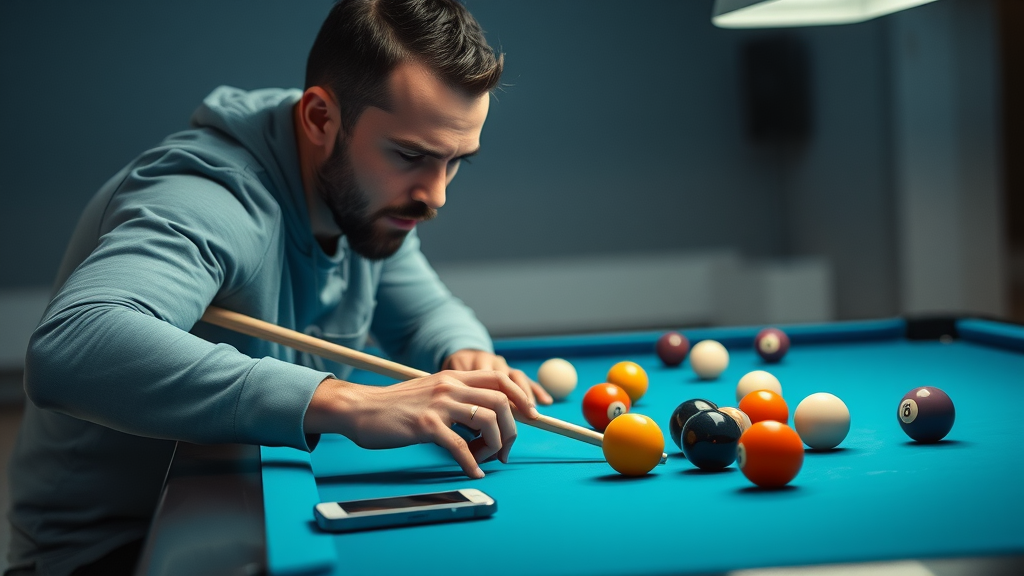
No advanced billiard techniques become automatic without methodical practice. Elite players structure their training sessions with targeted drills that emphasize consistency, cue ball placement, shot visualization, and recovery skills. Building muscle memory for stance, grip, bridge, and follow-through allows you to maintain a steady baseline performance even under pressure. Some of the best routines involve setting up obstacle courses, performing deliberate spin shots, or practicing jump and bank shots until they’re second nature.
Tracking progress with score apps, reviewing shot patterns, and upgrading practice tools—like smart cues or precision targets—further enhances your learning curve. It’s not about spending endless hours at the table, but about focused, deliberate practice on the advanced techniques that will raise your game to professional standards.
What is the best pool technique?
Answer: The best pool technique is a combination of a consistent stance, a disciplined pre-shot routine, and a fluid, dynamic follow-through. Together, these fundamentals serve as a foundation for integrating advanced billiard techniques such as cue ball control, banking, and jump shots into your everyday play.
- Stance and Alignment Drill: Place five balls in a line and practice perfecting stance before every shot, ensuring your back foot and shoulders are square and stable.
- Cue Ball Control Drill: Shoot consistent stop shots at different distances, varying with top spin, draw, and side spin, focusing on striking the cue ball at the exact contact point needed.
- Bank and Kick Drill: Pick a cushion and practice banking and kicking object balls to predetermined pockets, adjusting for spin and rebound angles.
- Jump Shot Sequence: Place blockers and rehearse jump shots, focusing on cue elevation, aim, and follow-through.
- Pattern Play Drill: Lay out three random balls and plan a three-shot run out, using advanced aiming and cue ball positioning for each move.
Common Mistakes to Avoid When Using Advanced Billiard Techniques
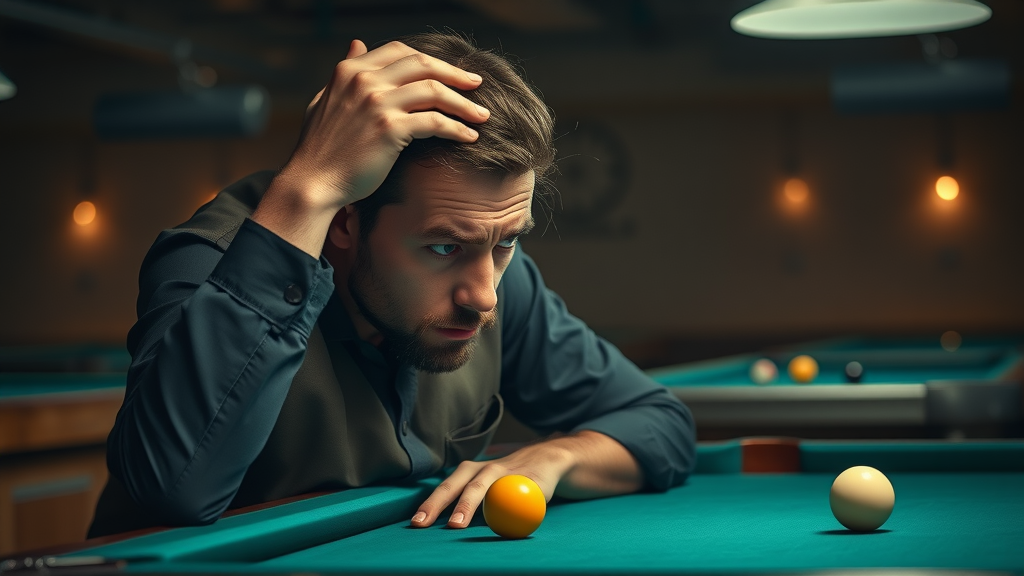
Mastering advanced billiard techniques takes time, but falling into common traps can derail your progress. Overcueing—trying to force power at the expense of accuracy—often results in missed shots or loss of cue ball control. Poor stance and grip break down shot integrity, while neglecting proper angles leads to blocked or scratched balls. Don’t overlook routine maintenance of your cue tip and avoid improper grip pressure—these small details accumulate into significant performance advantages or setbacks.
Developing the discipline to assess each shot thoughtfully, plan ahead, and practice with intention will help you sidestep errors that even seasoned players occasionally make. Continuous self-analysis, seeking feedback, and embracing structured practice are the antidotes to stagnation at any level of play.
- Checklist of Common Mistakes:
- Overcueing or overhitting shots
- Poor stance and alignment
- Neglecting angle calculation
- Improper grip or faulty cue tip maintenance
Interview Quotes: Insights from World-Class Billiards Pros on Advanced Techniques
"Pool is not just physics—it’s emotion, strategy, and adaptability combined. Pros trust their instinct honed through advanced billiard techniques." – Elite tour player
FAQs: Getting Clarity on Advanced Billiard Techniques and Pool and Billiard Play
How can beginners transition to advanced billiard techniques?
The transition from beginner to advanced starts with establishing strong fundamentals—consistent stance, pre-shot routine, and a disciplined follow-through. Once these habits are ingrained, gradually incorporate one advanced skill at a time: focus on cue ball control, explore aiming systems, and begin practicing specialty shots like banks and jumps. Structured practice and regular feedback will help you evolve faster than trying to adopt every technique at once.
What tools help analyze and improve advanced pool and billiard skills?
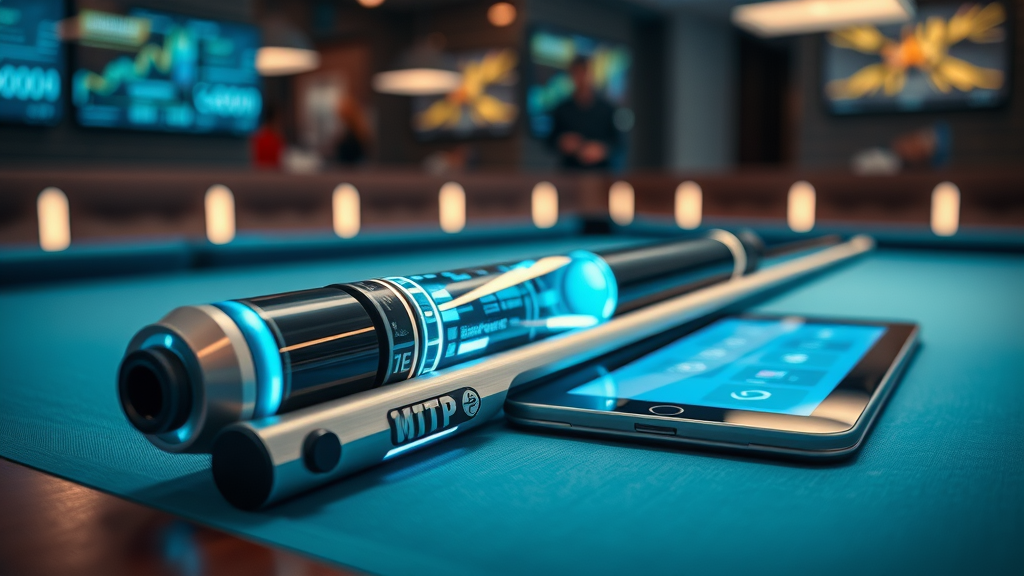
Digital tools such as smart cues, training apps, and shot analysis cameras provide insightful feedback on stroke, alignment, and cue ball movement. Features like slow-motion replay and statistical tracking highlight weaknesses and monitor improvement. Physical aids—like cue guides, target balls, and practice mats—can magnify your understanding of advanced techniques and reinforce positive routines.
Are advanced billiard techniques legal in professional tournaments?
Yes, virtually all advanced billiard techniques—including the use of spin, jump shots, and english—are legal in professional tournaments, provided they adhere to rules on cue tip contact and cue elevation. Always check the regulations of your specific league or event to ensure your technique is competition-ready and compliant.
Master Advanced Billiard Techniques: Elevate Your Pool and Billiard Game Today
Ready to execute shots like a world-class pro? Start applying these advanced billiard techniques today—practice with focus, compete with confidence, and watch your pool and billiard performance soar to new heights!
Every champion started as a student—commit to advanced practice, seek feedback, and let every shot sharpen your edge. The game awaits. Take your skills to the next level now!
 Add Row
Add Row  Add
Add 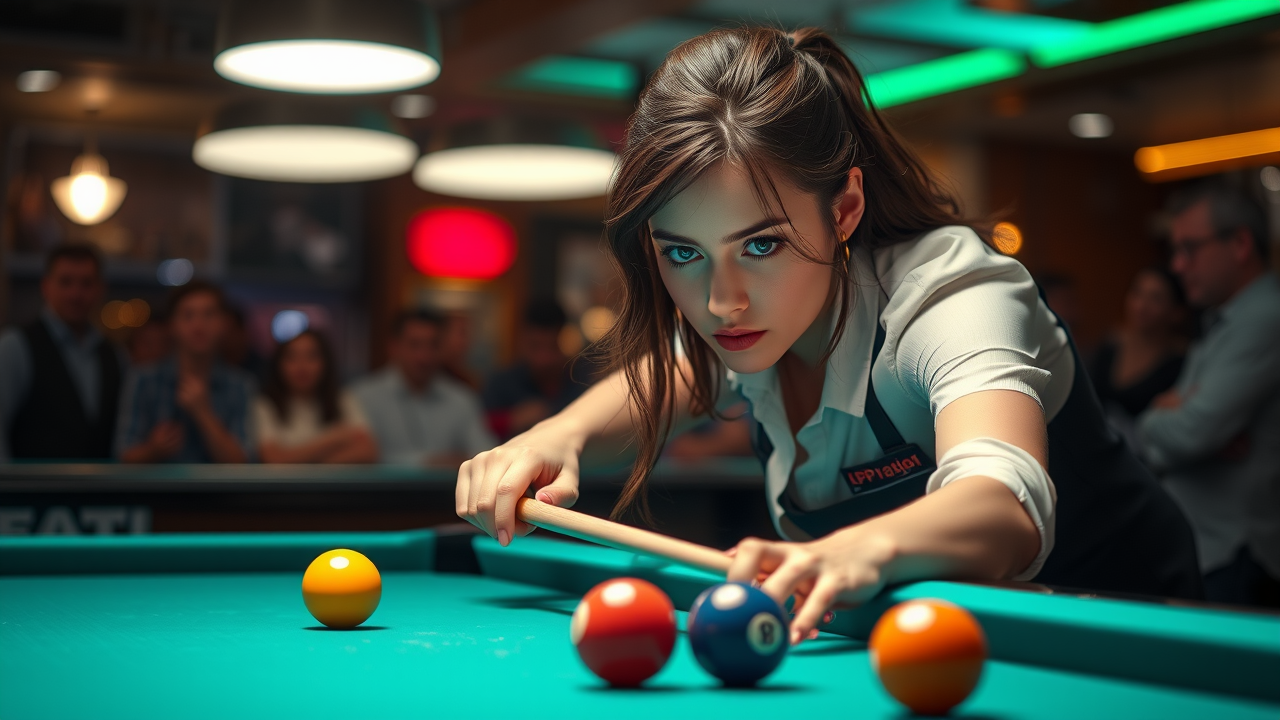
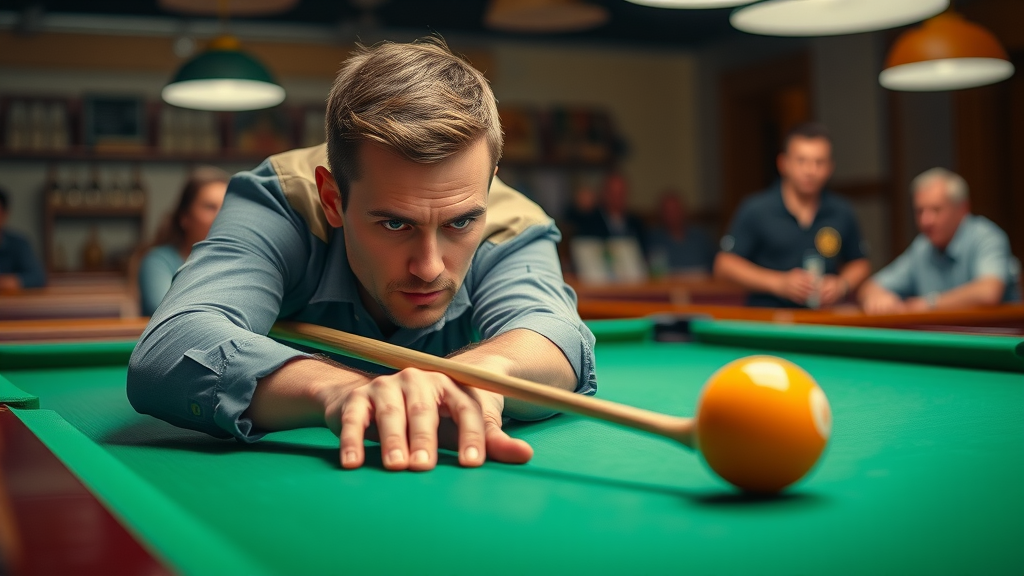
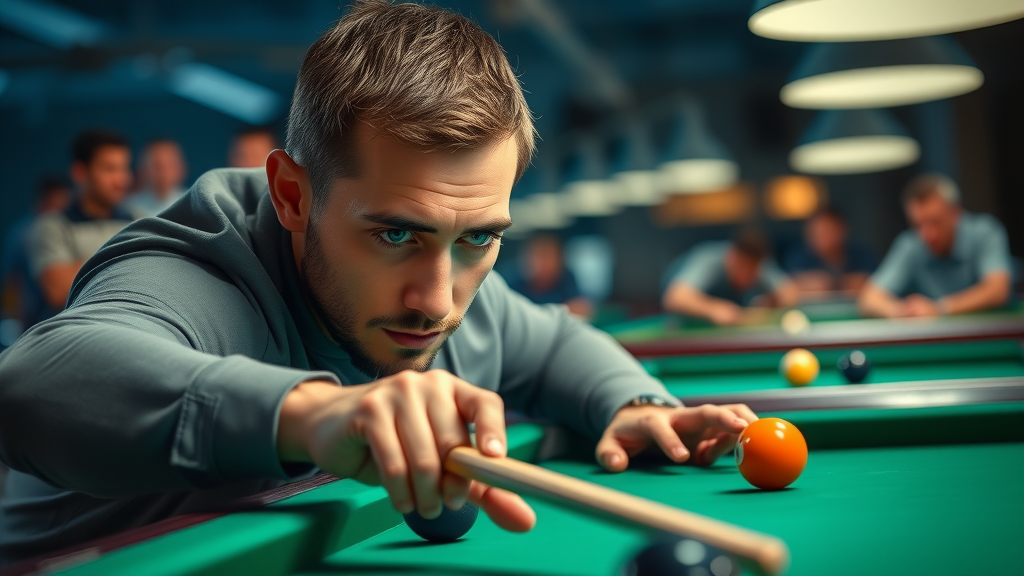
Write A Comment